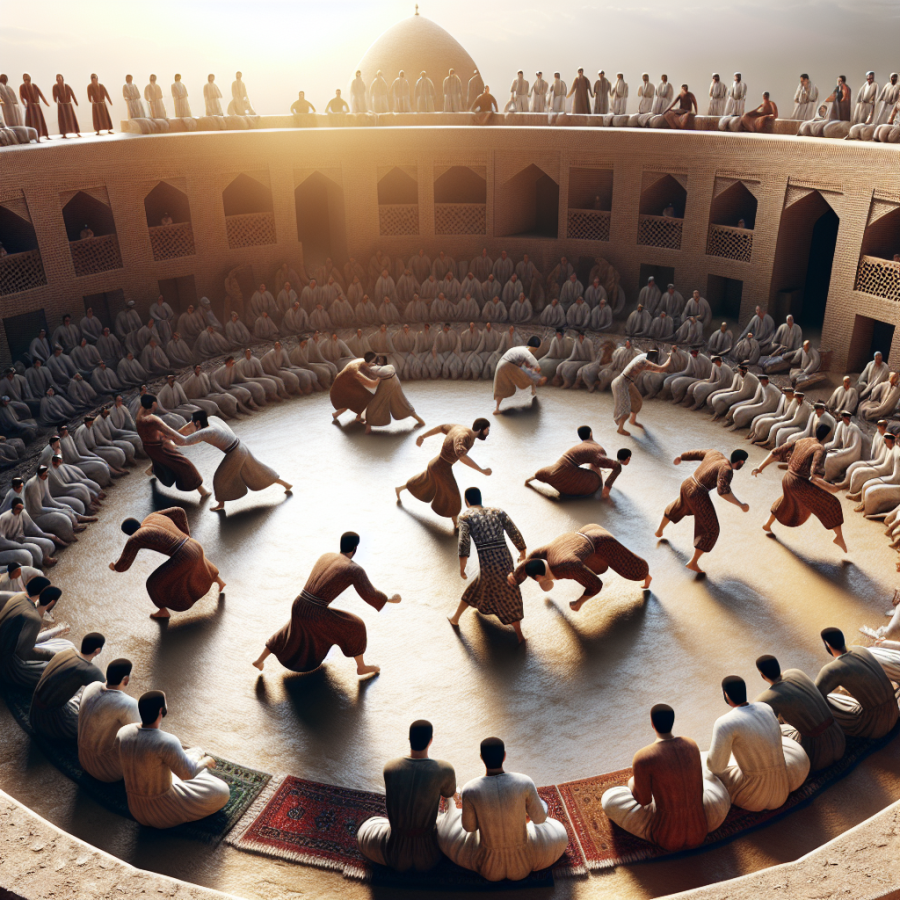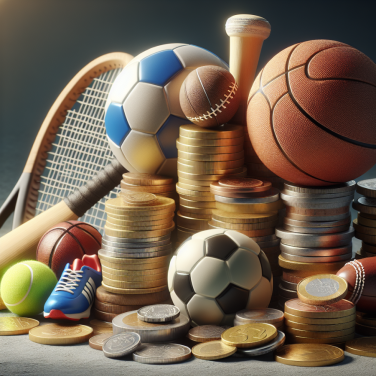**The History and Significance of Varzesh-e Pahlavani**
Dating back to the ancient Persian empire, Varzesh-e Pahlavani, also known as Pahlavani wrestling or simply Varzesh-e Bastani (ancient sport), merges physical training with mental and spiritual discipline. Its foundations are deeply rooted in the warrior traditions of Persia, intended to forge not just fighters, but also protectors of justice and virtue. Historically, practitioners, or Pahlavans, were expected to be models of ethical integrity and courage, the sport being as much about moral fortitude as physical strength.
**Training and Techniques in Varzesh-e Pahlavani**
The regimen for a Pahlavan is comprehensive, to say the least. It includes calisthenics, strength training, and grappling techniques, all performed within the confines of a Zurkhaneh – the House of Strength. At the center of this traditional gymnasium lies the Gaud, a hexagonal or octagonal pit where athletes train and compete. In their training, Pahlavans employ various traditional equipment such as the Meel (Persian clubs), Kabbadeh (iron bows), and Sang (shields), each designed to enhance a particular aspect of their physical fitness or wrestling skills. The wrestling style associated with Varzesh-e Pahlavani is Koshti Pahlavani, combining throws, locks, and tactical groundwork.
**Rituals and Ceremonies in Varzesh-e Pahlavani**
Varzesh-e Pahlavani is as ritualistic as it is physical. A typical session begins with the Morshed, a master or mentor, setting the rhythm with drumbeats and Persian poetry. The Morshed's recitations are often from the Shahnameh, the Persian Book of Kings, which tells tales of heroic figures and moral lessons. The Pahlavans synchronize their movements to the beat and the spirituality-infused atmosphere, evoking a sense of unity and camaraderie. These ceremonies serve to not only warm up the practitioners but also to link the present-day sport with its ancient roots.
**Varzesh-e Pahlavani's Influence and Legacy**
Varzesh-e Pahlavani has significantly influenced various aspects of Persian culture, from art to folklore, and has threaded through the societal fabric as a form of national pride.
Read also:
Scaling to New Heights: The Thrill of Rock Climbing
Tracing the Roots of Varzesh-e Pahlavani: The Ancient Art of Persian Warriors
Varzesh-e Pahlavani, which translates to "the sport of the heroes," is more than just a physical discipline; it is a rich cultural tapestry woven with the threads of history, philosophy, and the veneration of heroes past. This ancient sport, deeply entrenched in Persian culture, has been a symbol of strength and valor for centuries, embodying the essence of Iranian identity through a harmonious blend of physical and spiritual fitness.
The origins of Varzesh-e Pahlavani can be traced back to the Parthian Empire, which spanned from the mid-3rd century BCE to the early 3rd century CE. It was further developed during the illustrious Sassanid era, when Zoorkhaneh, the "House of Strength," became the training ground for warriors. The quintessence of a Zoorkhaneh was the preparation of warriors not only for battle but for a life of chivalry, nobility, and virtue. The ethos of this practice was encapsulated in the concept of "Javanmardi," the traditional Persian code of honor, emphasizing courage, self-sacrifice, and righteousness.
Over the centuries, Varzesh-e Pahlavani evolved, influenced by the teachings of Islam and Sufism. The sport became a confluence of physical prowess and spiritual depth. This integration ensured that practitioners, known as Pahlavans, strove for excellence in character as much as in physical strength. The legendary exploits of celebrated Pahlavans like Pourya-ye Vali further enriched the narrative of this art form, with tales of their might and moral fiber passed down through generations.
The physical aspect of Varzesh-e Pahlavani encompasses a myriad of exercises with historical weaponry and tools. The "Meel," heavy wooden clubs synonymous with the sport, are maneuvered in intricate patterns to develop strength and flexibility. The "Kabbadeh," a bow-shaped metal weight, is lifted and swung to enhance muscular endurance, and the "Sang," a large shield-like stone, is hoisted to cultivate explosive power. These traditional pieces of equipment are quintessential to the Varzesh-e Pahlavani regimen, each with its own place in the pantheon of the sport's cherished customs.
But Varzesh-e Pahlavani is not simply about physical training. The ceremonial rituals that surround the workouts reflect the spiritual dimensions of the sport.
The Rituals and Practices: Understanding the Essence of Pahlavani Training
Pahlavani training, an ancient practice embedding physical education, moral values, and Sufi traditions, is a testament to the rich cultural tapestry of Iran. This heroic sport is not merely a set of exercises; it is a spiritual journey that champions the development of inner strength and noble character.
At the heart of Pahlavani training lies the Zoorkhaneh, the "House of Strength," where athletes, known as Pahlevans, engage in a series of ritualistic exercises. The Zoorkhaneh itself is more than a gymnasium; it is a sacred arena where the body and soul are forged through time-honored customs and the camaraderie of fellow Pahlevans.
The training sessions are orchestrated with rhythmic and soulful Persian music, where the Morshed (master instructor) plays the Zarb (drum) and recites poetry, setting the tempo and uplifting the spirits of the participants. This music not only paces the activities but also resonates with the spiritual dimension of Varzesh-e Pahlavani, rendering the physical exertion a meditative experience.
The central platform in the Zoorkhaneh is the Gaud, a sunken octagonal or circular area where Pahlevans perform their exercises. One iconic aspect of the training is the use of traditional equipment reminiscent of ancient warrior armaments. These include the Meel (wooden clubs), Sang (shields), Kabbadeh (bow-shaped iron weights), and the Takhteh (push-up boards), each with its specific function and symbolism within the regimen.
Using the Meel involves a series of club swinging movements that develop shoulder strength, flexibility, and coordination. Pahlevans start with lighter clubs and gradually move to heavier ones as they gain strength and mastery over time. The graceful and rhythmic motion of the Meel is likened to the twirling of a dervish, imbibing a sense of spiritual transcendence amidst intense physical activity.
The Sang exercises, performed with heavy wooden shields, simulate ancient combat maneuvers and build muscular endurance. Incorporating wrestling techniques, these drills enhance agility and the ability to maintain one's balance, preparing Pahlevans not only for physical contests but also for the metaphorical battles of life.
Pahlevani training is deeply interconnected with the moral tenets of Varzesh-e Pahlavani.




